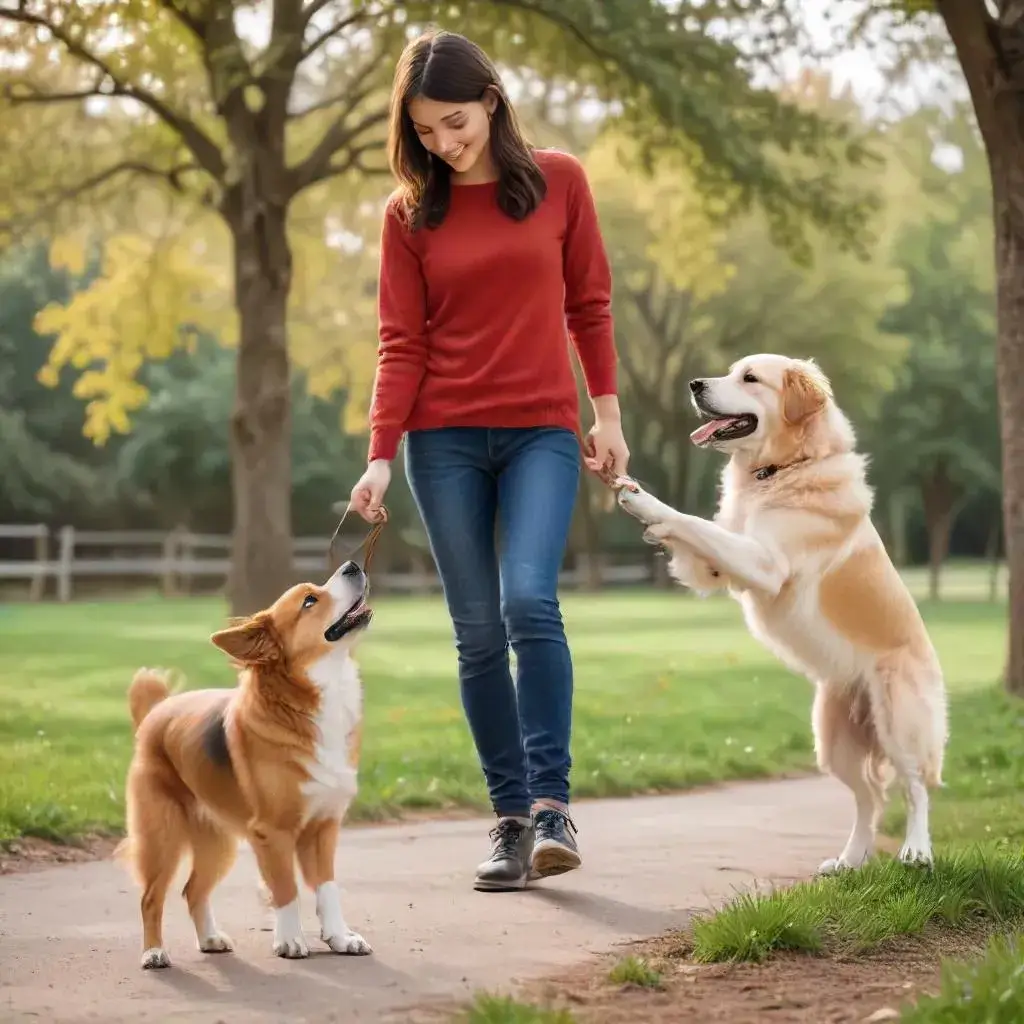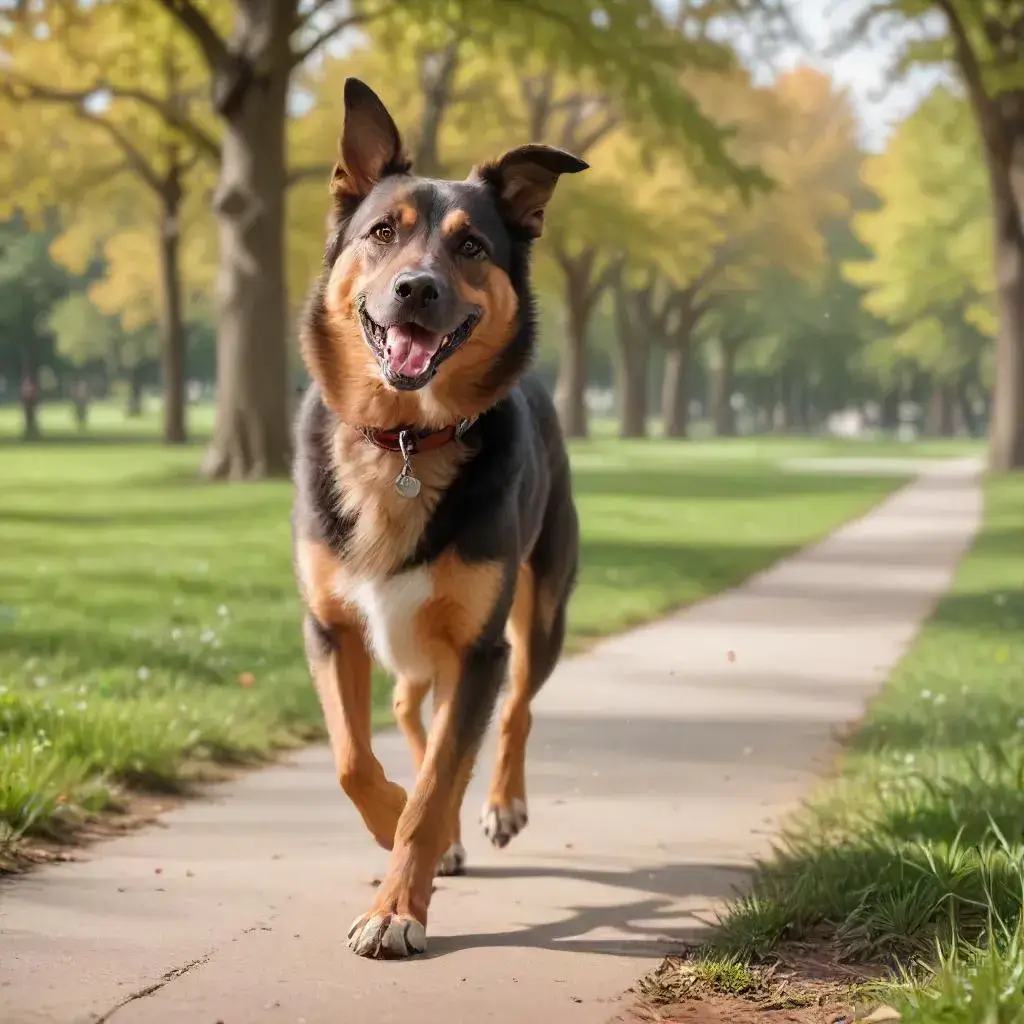Introduction: The Importance of Teaching Your Dog to Heel
Teaching your dog to heel is one of the most valuable skills they can learn. A dog that heels walk calmly by your side without pulling on the leash, making walks more enjoyable and safe for both you and your pet. This command is especially useful in busy areas or when passing by distractions like other dogs or people. In this comprehensive guide, we will cover everything you need to know about how to teach your dog to heel, from the basics of training to overcoming common challenges.
Understanding the Heel Command
The heel command instructs your dog to walk close to your side, usually on your left, with their head aligned with your leg. Unlike simply walking on a loose leash, heeling requires your dog to maintain a specific position without pulling ahead or lagging.
Why Heel Training Is Important
Heel training is important for several reasons:
- Safety: It ensures your dog stays close to you, preventing them from darting into traffic or getting tangled in the leash.
- Control: It gives you better control over your dog, especially in crowded or busy environments.
- Discipline: Heel training reinforces discipline and focus, which can improve your dog’s overall behavior.
When to Start Heel Training
It’s best to start heel training when your dog is young, but older dogs can learn this command as well. The key is patience and consistency.
Ideal Age for Training
- Puppies: As early as 8 weeks old.
- Adult dogs: Anytime, though it may take longer for older dogs to learn.
Preparing for Heel Training
Before you start teaching your dog to heel, it’s important to gather the right tools and create a conducive environment for training.
Essential Tools for Heel Training
Having the right equipment can make heel training easier and more effective.
Recommended Tools
- Leash: A standard 4-6 foot leash is ideal for heel training. Avoid retractable leashes as they do not offer consistent control.
- Collar: A flat collar or a martingale collar is recommended. Avoid choke chains or prong collars, as they can cause injury.
- Treats: High-value treats that your dog loves will help reinforce good behavior. Soft, small treats work best for quick rewards.
- Clicker (optional): A clicker can be used for clicker training, which helps mark the exact moment your dog performs the desired behavior.
Creating a Positive Training Environment
Choose a quiet, distraction-free environment to begin heel training. As your dog progresses, you can gradually introduce more distractions.
Tips for a Successful Environment
- Start indoors: Begin training in a quiet room or hallway where your dog is familiar and comfortable.
- Move outdoors gradually: Once your dog understands the basics, move the training outdoors to a quiet backyard or park.
- Increase distractions slowly: As your dog improves, introduce more distractions, such as other people, dogs, or sounds.
Step-by-Step Guide to Teaching Your Dog to Heel

Now that you’re prepared, let’s dive into the step-by-step process of teaching your dog to heel.
1. Introduce the Heel Command
Start by introducing your dog to the concept of walking by your side.
Steps to Introduce Heel
- Step 1: Stand with your dog on your left side, holding the leash in your right hand and treats in your left hand.
- Step 2: Hold a treat close to your dog’s nose, letting them sniff it but not eat it.
- Step 3: Start walking slowly, using the treat to guide your dog into position next to your leg.
- Step 4: As soon as your dog is in the correct position, say “heel” and give them the treat.
- Step 5: Praise your dog with positive reinforcement, such as “Good job!” or “Well done!”
Practice Sessions
- Short and frequent: Keep initial training sessions short (5-10 minutes) and frequent, repeating several times a day.
- Consistency: Use the same word “heel” each time to ensure your dog understands the command.
2. Reinforce the Heel Position
Once your dog starts to understand the heel position, it’s time to reinforce this behavior and make it more consistent.
Steps to Reinforce Heel
- Step 1: Begin each walk by getting your dog into the heel position before moving forward.
- Step 2: Walk a few steps, then stop. If your dog stays in the heel position, reward them with a treat and praise.
- Step 3: Gradually increase the number of steps you take before rewarding your dog.
- Step 4: If your dog pulls ahead or lags, stop immediately and guide them back into the correct position.
Avoiding Common Mistakes
- Pulling on the leash: Avoid pulling on the leash to correct your dog’s position. Instead, use treats and your voice to guide them back.
- Rewarding too late: Make sure to reward your dog immediately when they are in the correct position to reinforce the behavior.
3. Introduce Distractions
Once your dog is reliably heeling in a quiet environment, start introducing distractions to test and strengthen their ability to heel in different situations.
Handling Distractions
- Step 1: Begin by walking in a quiet area with minimal distractions, such as a backyard or quiet street.
- Step 2: Gradually introduce mild distractions, such as other people or cars passing by. Keep your dog’s focus by holding a treat near their nose and repeating the “heel” command.
- Step 3: If your dog breaks the heel position, stop, and calmly guide them back to your side. Reward them once they’re back in position.
- Step 4: Slowly increase the level of distractions, such as walking near other dogs, in busier areas, or during different times of the day.
Positive Reinforcement
- Praise and treats: Continue to use positive reinforcement, such as treats and praise, whenever your dog stays in the heel position despite distractions.
- Gradual progression: Increase the difficulty of distractions gradually, ensuring your dog succeeds at each level before moving on to more challenging scenarios.
Advanced Heel Training Techniques

Once your dog has mastered basic heel training, you can introduce more advanced techniques to improve their precision and responsiveness.
1. Variable Speed Healing
Teaching your dog to heel at different speeds can improve their responsiveness and control.
Steps for Variable Speed Healing
- Step 1: Start walking at your normal pace with your dog in the heel position.
- Step 2: Without warning, change your speed—either speeding up or slowing down.
- Step 3: Reward your dog when they adjust their pace to stay in the heel position.
- Step 4: Practice this with various speed changes until your dog responds smoothly to each adjustment.
Tips for Success
- Use clear cues: Give a verbal cue, such as “slow” or “fast,” to help your dog understand the speed change.
- Consistency: Be consistent with the pace changes to avoid confusing your dog.
2. Off-Leash Heeling
Off-leash heeling requires your dog to stay close to your side without the guidance of a leash, which is useful in controlled environments.
Steps for Off-Leash Heeling
- Step 1: Start in a safe, enclosed area where you can control the environment.
- Step 2: Begin by walking with your dog on a loose leash, using the “heel” command as usual.
- Step 3: Gradually loosen your grip on the leash until it’s barely held, but your dog is still heeling.
- Step 4: Eventually, drop the leash entirely, continuing to use the “heel” command and rewarding your dog when they stay in position.
Safety Precautions
- Enclosed areas: Always practice off-leash heeling in an enclosed area to prevent your dog from running off.
- Recall training: Ensure your dog has a strong recall before attempting off-leash heeling.
3. Heel with Automatic Sit
Teaching your dog to sit automatically when you stop moving can add an extra level of discipline to their heel training.
Steps for Automatic Sit
- Step 1: Walk your dog in the heel position, as usual.
- Step 2: When you stop walking, give the “sit” command.
- Step 3: Once your dog sits, immediately reward them with a treat and praise.
- Step 4: Gradually phase out the verbal “sit” command so that your dog automatically sits when you stop.
Practice Tips
- Consistency: Consistently practice the automatic sit every time you stop walking.
- Patience: Some dogs may take longer to learn this behavior, so be patient and consistent with your training.
Common Challenges and How to Overcome Them

Heel training can come with its own set of challenges. Understanding these challenges and how to address them can make the training process smoother.
1. Pulling on the Leash
One of the most common issues during heel training is your dog pulling on the leash.
How to Address Pulling
- Stop and reset: When your dog pulls, stop walking immediately. Wait for them to return to your side before continuing.
- Use a shorter leash: A shorter leash gives your dog less room to pull and helps you maintain better control.
- Practice in low-distraction areas: Start in quiet areas with fewer distractions to reduce the likelihood of pulling.
2. Lagging Behind
Some dogs may lag instead of pulling ahead, which can be just as challenging.
How to Address Lagging
- Use motivation: Use a high-value treat or a favorite toy to encourage your dog to keep pace with you.
- Increase enthusiasm: Walk at a slightly faster pace to keep your dog engaged and focused on you.
- Short, upbeat commands: Use enthusiastic verbal cues, such as “Let’s go!” to keep your dog moving forward.
3. Distraction by Other Dogs or People
Distractions from other dogs, people, or animals can make it difficult for your dog to maintain the heel position.
How to Handle Distractions
- Practice focus exercises: Teach your dog to focus on you by using treats and the “watch me” command during walks.
- Increase distance: Start by practicing heel in less crowded areas and gradually decrease the distance to distractions as your dog improves.
- Reward focus: Continuously reward your dog when they ignore distractions and stay in the heel position.
Reinforcing Good Behavior
Consistency is key to maintaining your dog’s heeling skills. Regular practice and positive reinforcement will help keep their training sharp.
Regular Practice
Even after your dog has mastered the heel command, regular practice is important to reinforce the behavior.
Daily Walks
- Incorporate heel training: Use the heel command during daily walks to keep the behavior fresh in your dog’s mind.
- Short sessions: Even short, focused sessions can be effective in maintaining your dog’s skills.
Positive Reinforcement
Positive reinforcement should continue even after your dog has learned to heel.
Treats and Praise
- Use intermittently: Once your dog consistently heels, start rewarding them intermittently rather than every time.
- Verbal praise: Continue to use verbal praise, such as “good heel,” to reinforce the behavior without always relying on treats.
FAQs About Teaching Your Dog to Heel
1. How long does it take to teach a dog to heel?
The time it takes to teach a dog to heel can vary depending on the dog’s age, breed, and previous training experience. Generally, it can take a few weeks to a few months of consistent training to master the heel command.
2. Can you teach an older dog to heel?
Yes, older dogs can learn to heel, although it may take longer than training a puppy. Patience and consistency are key when training older dogs.
3. Should I use a clicker for heel training?
Clicker training can be very effective for teaching heel, as it helps mark the exact moment your dog performs the desired behavior, making it easier for them to understand what you want.
4. How can I stop my dog from pulling during heel training?
To stop your dog from pulling, use the stop-and-go method, where you stop walking as soon as your dog pulls and only continue once they return to your side. Additionally, practicing in low-distraction environments can help reduce pulling.
5. What if my dog is easily distracted during walks?
If your dog is easily distracted, practice focus exercises, such as the “watch me” command, to help them stay focused on you. Start training in low-distraction areas and gradually increase the level of distractions as your dog improves.
6. Can I teach my dog to heel off-leash?
Yes, you can teach your dog to heel off-leash, but it should only be done in safe, enclosed areas. Ensure your dog has a strong recall command and is reliable with the heel command on-leash before attempting off-leash training.
Conclusion: The Benefits of a Well-Heeled Dog
Teaching your dog to heel is a valuable skill that enhances both your walks and your overall relationship with your pet. A well-heeled dog is easier to manage, safer in public spaces, and more focused on you as their leader. By following the steps outlined in this guide and remaining consistent with your training, you can help your dog master the heel command, leading to more enjoyable and stress-free walks.


